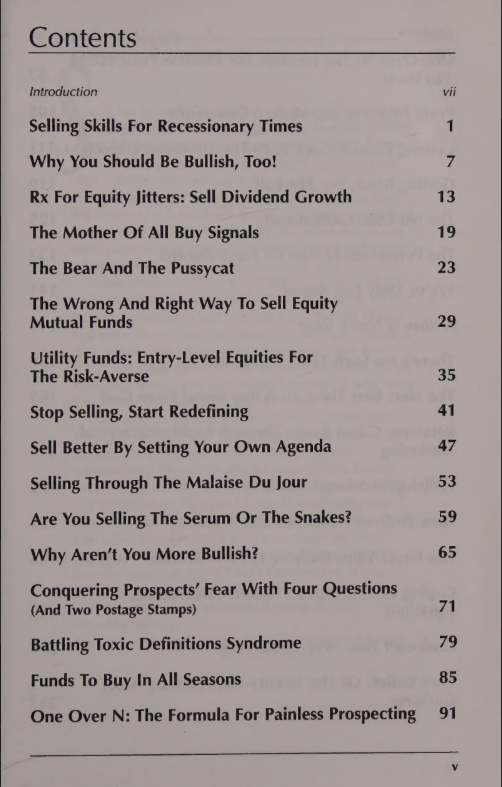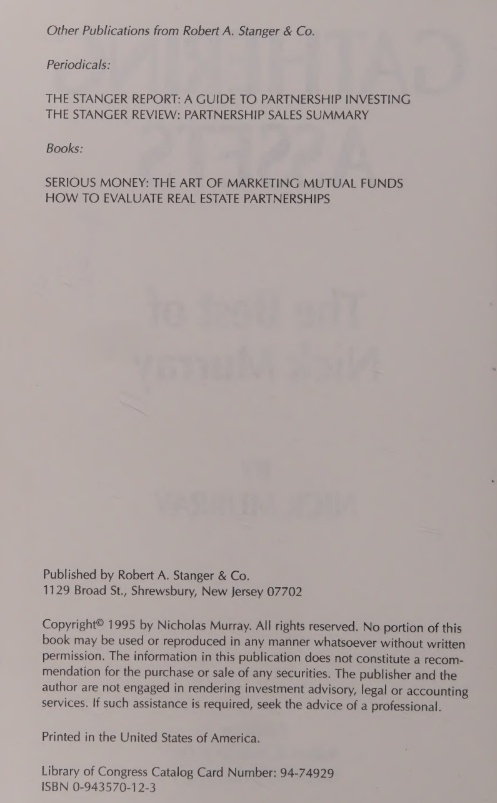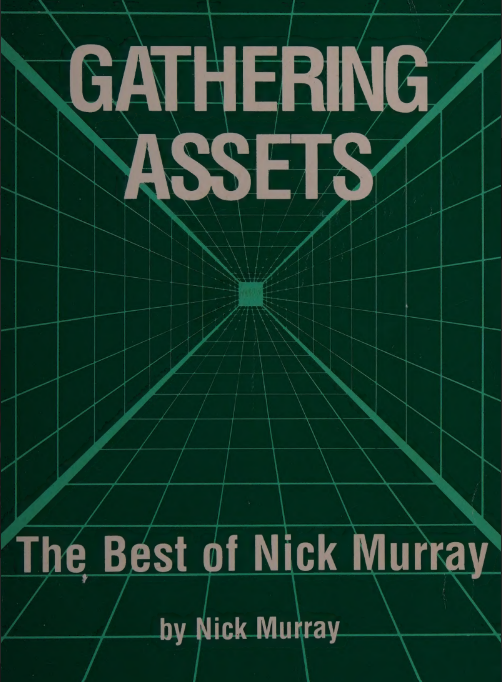


I’ve always felt that good people in our business pick up market share in adverse times—that the amateur’s “bear market” is the professional’s “big sale.” When the Saddam Hussein Memorial Instant Recession Massacre hit us in the summer of ’90, I was startled by the extent of the resultant paralysis…until I realized just how large a percentage of the industry had never seen a recession. Though this column strikes me, in retrospect, as surprisingly transaction-oriented (in that it talks a lot more about individual stocks than I usually do), it also strikes me as being marvelously accurate. PepsiCo nearly doubled from the October ’90 lows. AMr did double, because Eastern and Pan Am did disappear and TWA downsized in a prolonged and painful bankruptcy.
The interest rate on the long bond did crater—although here I literally didn’t foresee half the decline. I said that if the recession was really a corker, the yield would go from 9% to 7%; three years later it was actually 5.75%. But the thing I’m proudest of in this piece was the (sort of) “call” on the market low. After noting that the average postwar recession lasted 10-11 months, and that the stock market bottoms right around the mid-point of the recession, I wrote, “So if we’re in a three-to-four quarter recession that…started around July 1, 1990, you’d be looking for the market to be bottoming…just about any time now.” Which, on October 11, at Dow 2450, is exactly what it did. But my point isn’t that your future in the business (or even mine, for that matter) has anything to do with calling market turns. Instead, I was trying to establish that the more you have a sense of the cycle—and of the way the cycle always reassures itself—the more calmly and clearly you can identify the opportunities in each apocalypse du jour. If the United States wasn’t already in a recession the day before the tanks rolled into Kuwait, you can just about bet the ranch that we’re in one now.
With economic growth slowing to zero, employment growth doing likewise, construction spending in the deep-freeze and a credit crunch/banking crisis to boot, you had to know back in July that the economy was going nowhere fast. Now add a good old-fashioned oil shock to the system, and, after an unprecedented eight-year economic expansion, you’ve got just what you’d expect: recession. Right now, a shell-shocked financial services industry is asking: What’s happened? And what do we do now? Let’s take those two questions in order.
Question: WHAT HAPPENED? Answer: THE INEVITABLE. Just because we went eight years without a recession, and had ourselves the longest economic expansion since World War II, did- n’t mean the cycle got suspended. The economy was just robust enough to keep shaking off tacklers, and it stayed on its feet longer than anybody would have guessed possible. But trees do not grow all the way to the sky. The cycle always reasserts itself. And, with its massive debt levels, crashing real estate and crippled banking system, the economy needed to lay down and bleed awhile. Which it was in the process of doing—all the talk about a “soft landing” notwithstanding—when oil blindsided it. Pull out of a softening economy all those incremental dollars that have to go for energy, and you’re in Recession City.
3. IN A RECESSION, SHAKY INDUSTRIES CONSOLIDATE. BUY THE OBVIOUS POTENTIAL SURVIVORS. What industry gets double-whammied by recession and higher oil prices? Airlines, of course. AMR Corp., parent of American Airlines, is now the largest privately-owned airline company in the world. So it’s going to get hurt, right? Sure, but lots of weaker players are going to be mortal-ly wounded. Who’s going to emerge bigger and stronger if Eastern, TWA or Pan Am says sayonara? American. Meanwhile, the stock’s down from 107 to (at this writing) the low-40s. Earnings, shmearnings: it’s selling for 30% below book value and less than three times cash flow. What more do you want, frequent flyer mileage with your stock certificate?
4. THE MORE BEARISH YOU ARE ON STOCKS, THE MORE FIXED-INCOME INVESTMENTS I CAN SELL YOU. You call people, and they are howling, screaming bears on stocks. “This market’s going to 1600; I’m not buying anything!” Wait now: if you believe that, you’re not buying any stocks; I can live with that. But I can’t sit by idly and let you ignore the chance to more than double your money in the highest quality security known to man. Got your attention? Here’s how it works. If you think the market has the potential to go down almost 50% (from 3000 last June to 1600), you’re looking for an economic slowdown of massive pro-portions—the worst post-war recession yet. (“Darn tootin’ I am!” says Mr. Bear.) Well, in that scenario, interest rates are going to crater.
Either they’re going to free-fall of their own weight because there’s no demand for credit, or the Fed will push ‘em down to try to re-start the economy’s heart. Either way, in your scenario, the 30-year U.S. Treasury bond is going to go from yielding 9% to yielding 7% maximum. You can buy Treasurys on 10% margin. Do the math: on a 200 basis point drop, you make nearly two and a half times your equity. Can I buy you $1 million worth, Mr. Bear? That’s the great thing about this profession, there’s no such thing as no sale. Tell me why you won’t buy what I asked you to buy, and you’ve told me what you will buy. This same basic argument works perfectly well, if not quite as dramatically, with all bonds, CDs, and fixed annuities.


